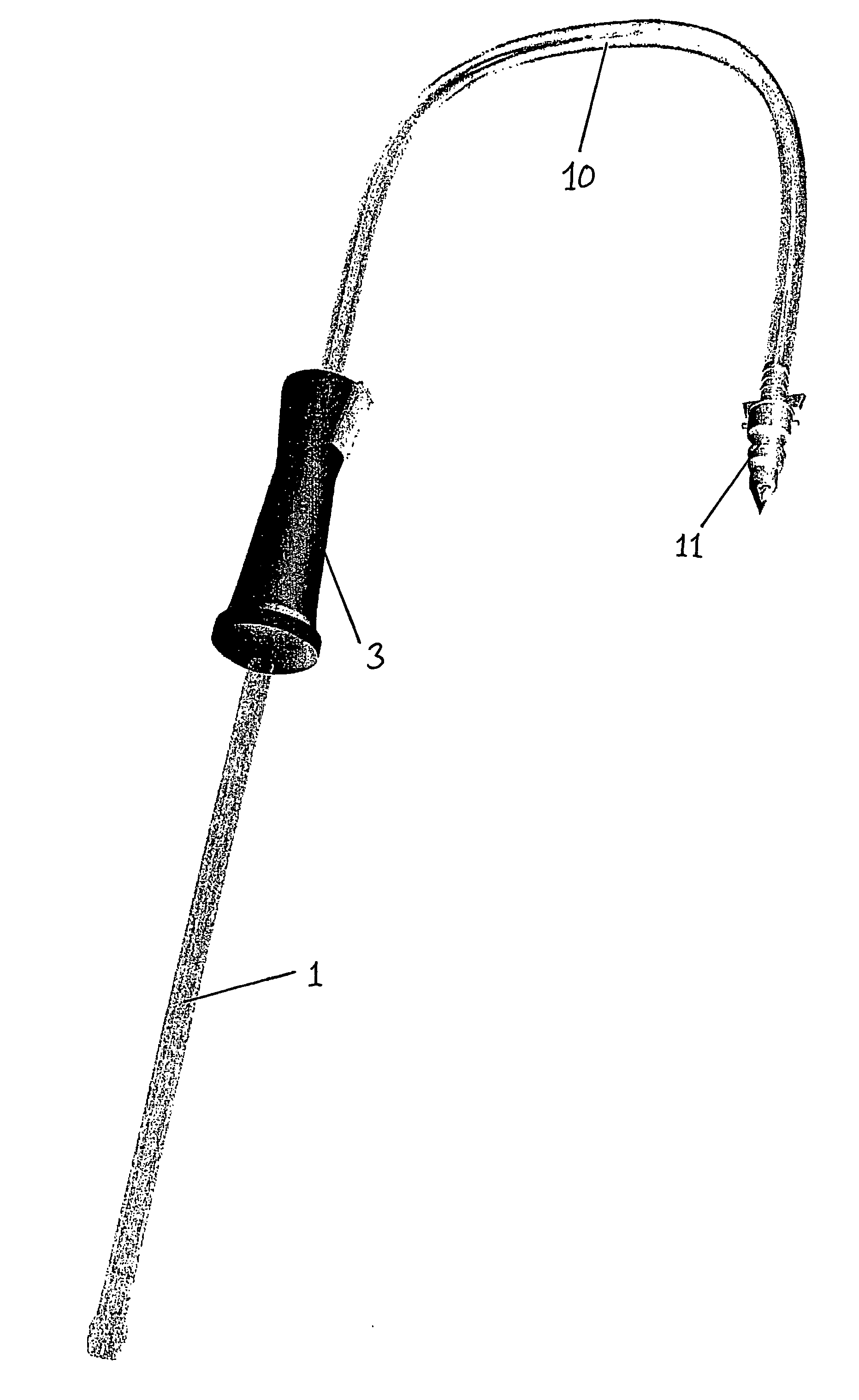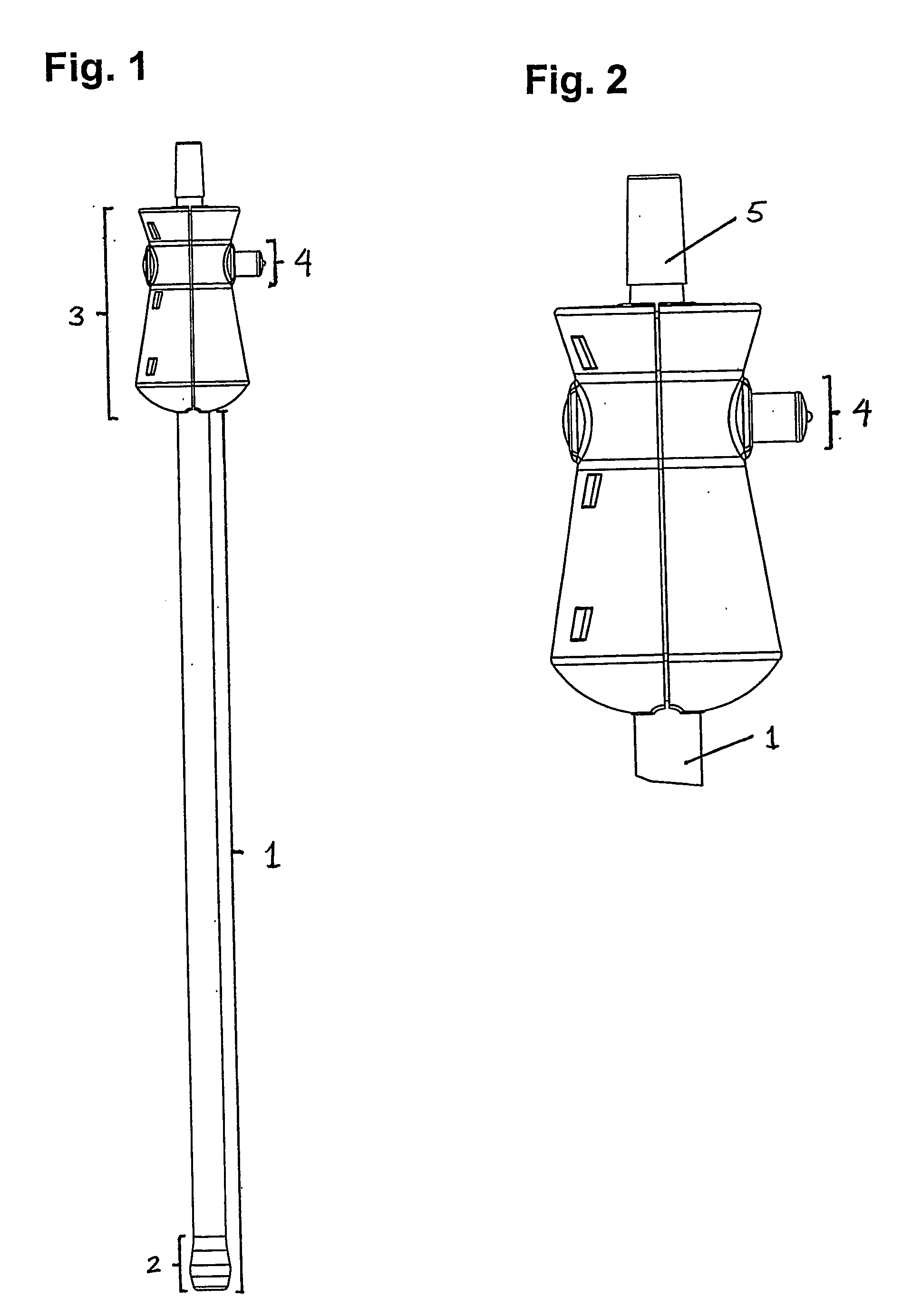Device for administration of fluids
a fluid and device technology, applied in the field of fluid devices for oral administration, can solve the problems of high mortality rate, inability to force-feed calves enough colostrum using this method, and significant economic problems of calves, and achieve the effect of convenient storage and transportation
- Summary
- Abstract
- Description
- Claims
- Application Information
AI Technical Summary
Benefits of technology
Problems solved by technology
Method used
Image
Examples
Embodiment Construction
Axially-Elongated Member
[0086] A feature of the present invention is a hollow, axially-elongated member which comprises a distal end comprising a first opening preferably in the form of a nozzle portion, and a proximal end comprising a second opening. In one preferred embodiment of the invention, said hollow axially-elongated member is of a diameter allowing insertion of the axially-elongated member into the esophagus of an individual, such as domestic animal, for example a ruminant, such as a member of a bovine species, for example a cow, such as a calf, for example a calf within, preferably less than 20 days after birth, such as less than 15 days after birth, such as less than 10 days after birth, such as less than 5 days after birth, such as e.g. 24 hours of birth.
[0087] Preferable, the invention is to be used on bovine species selected from the group consisting of Holstein and Jersey or other species preferred locally.
[0088] The outer diameter of the axially-elongated member...
PUM
 Login to View More
Login to View More Abstract
Description
Claims
Application Information
 Login to View More
Login to View More - R&D
- Intellectual Property
- Life Sciences
- Materials
- Tech Scout
- Unparalleled Data Quality
- Higher Quality Content
- 60% Fewer Hallucinations
Browse by: Latest US Patents, China's latest patents, Technical Efficacy Thesaurus, Application Domain, Technology Topic, Popular Technical Reports.
© 2025 PatSnap. All rights reserved.Legal|Privacy policy|Modern Slavery Act Transparency Statement|Sitemap|About US| Contact US: help@patsnap.com



